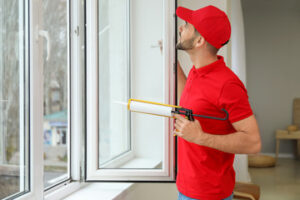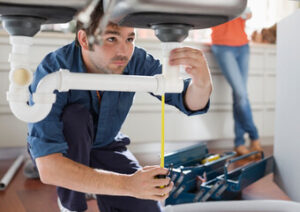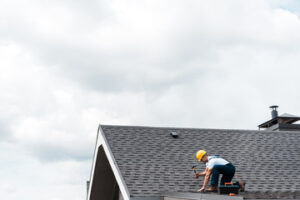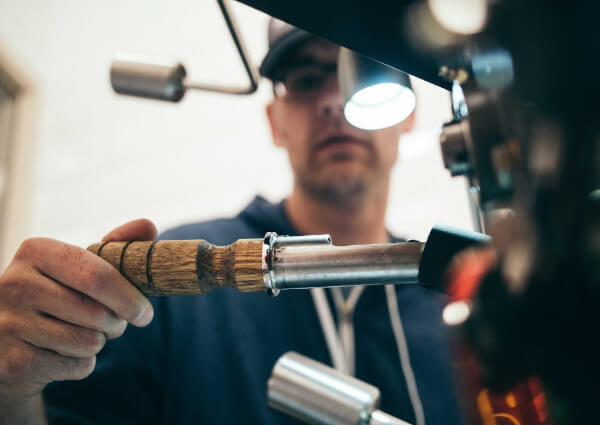Window replacement is an opportunity to improve your home’s aesthetics and boost its energy efficiency. It can be a complex project, though, and you’ll want to carefully consider your options before hiring a contractor.
To begin, clear a pathway to each window both indoors and out. Remove furniture, throw rugs, and breakable items from around the openings. Also, move plants or decorations located on sills and ledges. For professional help, contact Your Home Exterior Solutions now!
When homeowners are planning a window replacement, they often have many factors to consider, including energy efficiency, style and cost. A few tips for keeping your costs down include:
Purchasing windows from a reputable, high-end brand can help you save money on installation. Purchasing several windows at once can also lower the per-window cost for materials and labor. And don’t be afraid to negotiate with a contractor. Most companies expect some haggling and will factor that into their initial estimate.
The type of replacement window you choose will also affect your overall cost. A pocket replacement will cost less than a full-frame installation because it does not require removal of the old window sills and frame. A new-construction window, on the other hand, requires that all existing framing be removed and a space be created for the new window to slide into.
You should also keep in mind the amount of insulation and air-tightness your windows offer. Energy Star windows are recommended by the U.S. Environmental Protection Agency and are independently tested by the National Fenestration Rating Council to ensure that they meet high performance standards. They can be a great way to reduce energy costs and increase comfort in your home.
Replacing your windows with Energy Star-rated options can be a smart investment, but you should also invest in other ways to improve your home’s insulation and air-tightness. For example, adding attic insulation, caulking and weather stripping will significantly reduce heat loss and cold air infiltration.
Homeowners can install their own windows, but if you’re replacing an older, leaky window or dealing with significant damage or rot, it’s best to leave the installation to a professional. In addition to preventing further damage, hiring a professional can ensure your project is completed correctly and on time.
If you’re considering a DIY window replacement, be sure to research the pros and cons of each option. While it may seem like an easy project, sacrificing quality in order to save money on upfront contractor fees could ultimately cost you more in structural damage, water and energy infiltration and future repair costs.
Energy Efficiency
Window replacement is a substantial investment and homeowners should take the time to consider all of their options. In addition to aesthetic considerations, there is also the issue of energy efficiency. Old, single pane windows can allow cold air to enter the home during winter and warm air to escape in summer, leading to higher energy bills than necessary. New replacement windows offer energy-efficient features such as low-emissivity coatings, dual or triple panes and gas fills that help lower energy consumption.
In many cases, the benefits of energy efficient window replacement outweigh the increased cost of purchasing and installing a more expensive unit. But a full frame replacement isn’t always the right choice, especially for Anne Arundel County homeowners on a tight budget.
A full frame replacement is more expensive than a pocket installation because the entire existing frame and window sill must be removed in order to install a new window. A full frame replacement takes longer to complete as well, which can be a hassle for homeowners who are on a strict timeline or have limited remodeling funds.
On the other hand, a pocket installation is a much more affordable option that’s ideal for Anne Arundel County homeowners who are on a budget or have limited remodeling funds. With a pocket installation, only the existing window sash, operating hardware and covers are removed in order to insert the new window. This type of window is less invasive than a full frame replacement and can save you up to 20%-25% on your overall project cost.
While it may be tempting to replace windows when they begin showing signs of deterioration, such as sagging frames, sticking sashes or foggy glass, window repair is often a better solution. Window repair can address the problem areas in your home and prevent further damage, while restoring functionality and improving efficiency.
Style
If you’re replacing windows in your home, the type of window you choose plays a significant role in your energy efficiency, comfort and overall design. There are several window styles to consider, and each has its own advantages and disadvantages.
Choosing the right window style depends on many factors, including your budget and desired aesthetics. The most common types of replacement windows are single- and double-hung windows. These windows have lower and upper sashes that slide up and down, which allows for ample ventilation. They also allow you to use full screens and are easy to clean.
Other popular window replacement options include sliding windows, bay or bow windows, and casement windows. All of these windows have their own benefits and features, but you should choose a style that matches the style of your home. For example, if you have a historic home, it’s important to keep the original look intact, so you may want to choose a historical window type like a double-hung or an awning window.
Window frames come in a wide variety of materials and colors, so you can find the frame that best complements your home’s design. For example, if you have wood siding, you can choose windows with wood frames, while if your home has vinyl siding, you might opt for windows with aluminum or vinyl-clad frames, which are durable and low maintenance.
One thing to consider when choosing a replacement window is whether you prefer a full-frame or pocket installation. A full-frame installation is more invasive because it involves removing the existing casing and installing new jambs, sills and liners. A pocket installation is less invasive because it installs the window inside the existing frame. However, a pocket installation can lead to visibility concerns because it may reduce the amount of glass area visible.
Another factor to consider is whether you’d like a double-pane or triple-pane window. Although more expensive, double-pane windows provide better energy-efficiency and noise reduction. In addition, they’re often more visually appealing than single pane windows.
Installation
Installing new windows requires careful consideration of the frame type and operational style. A professional installer can help you choose the window that works best with your home and then install it to the specifications provided by the manufacturer. This will ensure that your new windows fit properly and function as they should. They can also help you select the appropriate type of insulation to prevent drafts and hot or cold air loss. Finally, they can add a system to shed water away from the sill and into the gutters or downspouts.
If you are replacing an existing window, your contractor will start by removing the old window. They will then clean and prep the opening for installation. This will include repairing any damage and filling any holes or cracks. Then they will install the new window and shims as needed to ensure it is level and plumb. Finally, they will seal and insulate the area around the window to protect it from the elements.
Whether you have a full-frame or pocket installation, it’s important to make sure the window is sealed properly. A poorly sealed replacement window can lead to moisture damage, mold, and rot in the surrounding wall and framing. It is also possible that it will let hot or cold air leak into your home. To avoid these problems, make sure you have your contractor use a caulking material with a low expansion rate around the frame.
A pocket installation uses a window “pocket” that fits into the existing window opening. This is much easier to do than a full-frame replacement because the window doesn’t have to be removed from the frame. This can save time and money. However, it is still important to hire a licensed contractor to perform the work because they are better equipped to deal with any unexpected issues that may arise during the process.
A full-frame replacement replaces the entire frame of the window, including the sash (moving part), muntins (grids), and trim. This can be a good choice for older homes with original frames that are in poor condition. It is also a good choice for replacements in hard-to-reach places, such as upper story bedrooms.


 Other trenchless methods include spray lining and brush coating. Both techniques can halt corrosion in cast iron pipes and eliminate sewer gas from leaky joints. If your sewer line leaks, an expert plumber can repair the trenchless sewer. This method
Other trenchless methods include spray lining and brush coating. Both techniques can halt corrosion in cast iron pipes and eliminate sewer gas from leaky joints. If your sewer line leaks, an expert plumber can repair the trenchless sewer. This method  When doing roof leak repair, finding the source of the leak is a good start. Roofing contractors
When doing roof leak repair, finding the source of the leak is a good start. Roofing contractors 



